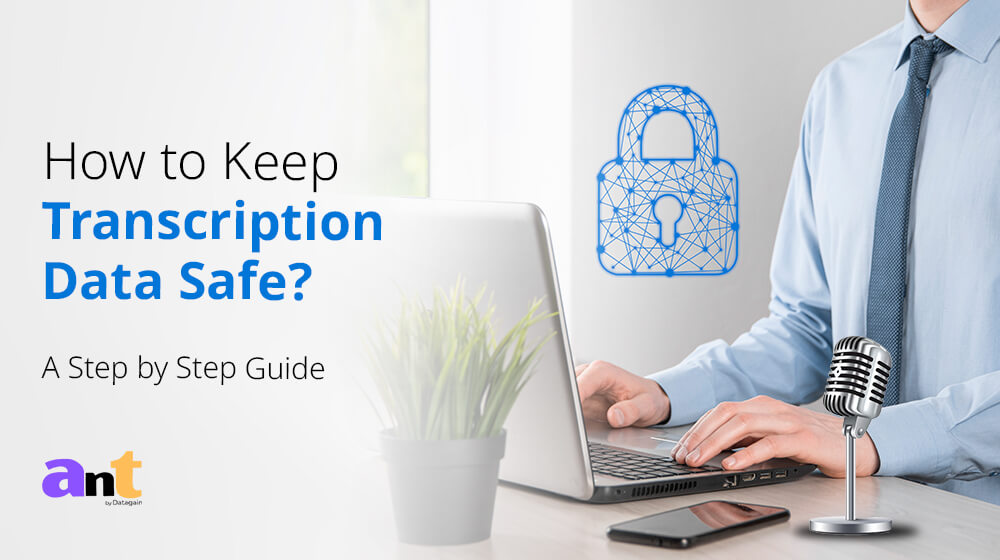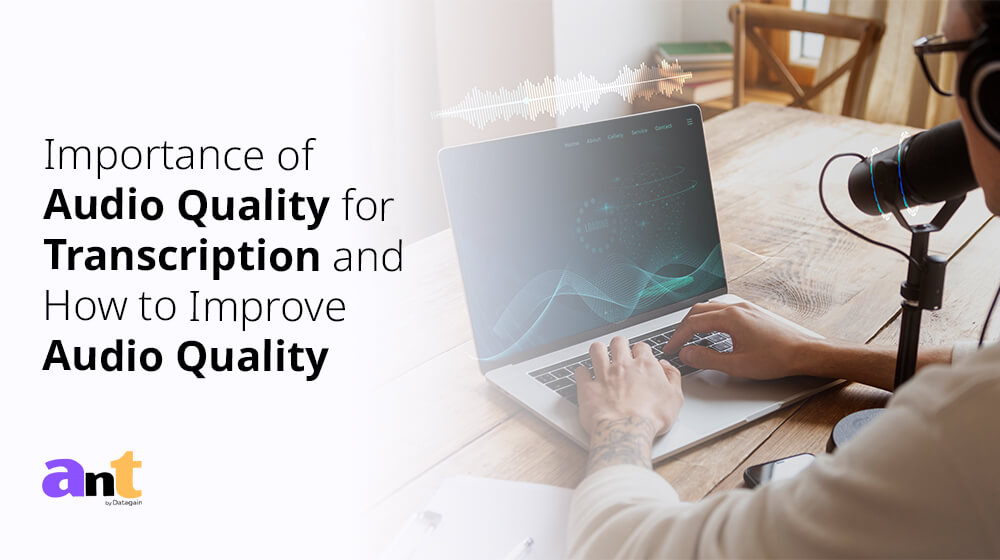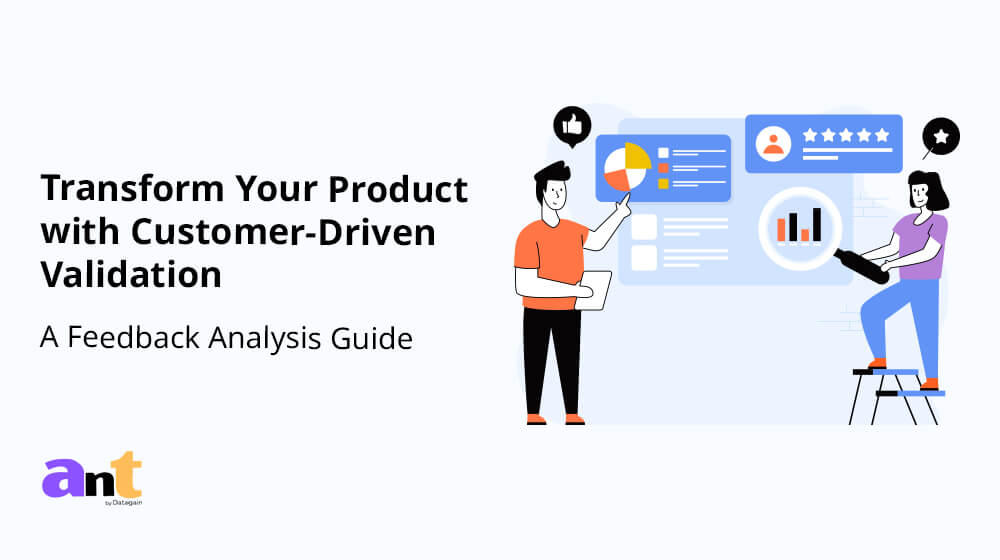A Step-by-Step Complete Guide to Writing a Transcript

Home » Blog » transcript » A Step-by-Step Complete Guide to Writing a Transcript
By following the simple steps detailed below in this guide and with a little bit of elbow grease, you won’t just be able to write a transcript – you’ll be able to write great transcripts
What is the Best Way to Start the Transcription Process?
Like with most things in life, a little bit of preparation will take you a long way when it comes to transcribing any audio or video recording. If you equip yourself with the right knowledge and tools beforehand, then the entire transcription process will be much easier. So follow these simple steps to ensure you are putting your best foot forward to kickstart your transcription process!
Choose the Right Tools for the Transcription Process!
Transcription process can be made simpler and faster by using the right tools for the job. Some of the most basic tools one can use are:
Noise Cancelling Headphones:
A good set of headphones is the most basic requirement for the transcription process. Noise Cancelling Headphones helps in eliminating any background noise and lets you focus your attention on the recording at hand.
A Computer:
Transcription does not require you to invest in any specialty computers, you can use your own desktop or laptop to start the transcription process. You’ll need a computer with a reliable keyboard, just enough processing power to reduce any lag that might be experienced, and lastly but most importantly, a comfortable desk and chair because the transcription process takes at least 3-4 times longer than the actual recording length.
Transcription Software:
There are a few different reasons to use Transcription Software. Using a dedicated Transcription Software allows you to not only listen to the recording but also write and edit the transcript all in one place, eliminating the need to use multiple programs to perform the same task. They offer automatic speech-to-text transcription services, which save you the time of writing the first draft. Transcription software like Ant Datagain also offers keyboard shortcuts, editing tools, and much more to help speed up the transcription process.
What Kind of Transcription Do You Need?
Your transcription process will differ depending on what is the intended end use of the transcript. So you’ll have to identify the intended use of the transcript as it will help you decide on how detailed your transcription needs to be. These levels of detail can be categorized in many ways, a few of which are listed below.
Full-Verbatim transcription
Full-verbatim transcription includes every word uttered in the recording and excludes nothing. That is, it will include any and all repetition, stuttering, coughing, filler words like ‘umm’, ‘like’, as well as pauses and false starts.
Intelligent-Verbatim transcription
Also known as ‘clean-verbatim’ or ‘word-for-word’ transcription. This is essentially a slightly more polished version of the full-verbatim transcription as it removed any verbal tics and false starts. It does not change the sentence structure or placement, just cleans it up thus making it much easier to read.
Detailed Notes transcription
In some cases, like when transcribing an interview, one might only require a few sections to be recognized and highlighted. Detailed Notes transcription does just that – it will condense all of the important information from the recording thus saving the reader valuable time.
Timestamps and Speaker Identification
Identifying speakers and using timestamps makes it easy to mine and extract information from the transcript. Before you start, keep in mind that this process might take time, so account for it in the beginning.
Begin Your Transcription Process: Step by Step Guide
- Listen to the whole before you start transcribing any audio or video recording
You might be tempted to start transcribing immediately without listening to the recording first but it is always good to familiarize yourself with the recording. Listening to the whole audio/video recording helps you recognize the speakers, the subject matter, and the flow of the conversation. It also helps you identify any obstacles that you might encounter. We suggest noting down speaker names, and terms you need to familiarize yourself with. Following this process will help you begin the transcription process with clarity of the subject matter and context.
- Transcribe a first rough draft
Now the real work begins. You will first transcribe an initial rough draft, this is especially advisable if you aren’t confident with your typing speed. At this stage, do not worry about capturing everything or overall accuracy. You will revisit the transcript during the second pass to clean it, edit it and correct any errors. Feel free to use abbreviations and shortcuts at this stage to compensate for slow typing speed.
- Revisit your rough draft and edit for accuracy
Once you have your rough draft in place, it is now time to clean it up. As you listen to the audio/video recording, follow along with your written transcript to address any typos or inconsistencies. This is the time to add any missed words and make necessary corrections. If you had used any abbreviations or shortcuts, take this time to spell them out fully. Check your speaker labels and timestamps if you have used them. Lastly, if conducting verbatim transcription, you do not need to correct grammar if your speaker has made a grammatical mistake in the recording.
- Format your transcript
You should now have a transcript that has been cleaned and is complete. It is not time to start formatting your transcript to fit your needs. If you already have set transcription guidelines in place for formatting, you should follow them. However, if you don’t, a completed transcription generally has at least a title, numbered pages, and distinct paragraphs. Use brackets to indicate any non-verbal communication like [laughing], [crying], [pause], etc. and if you are unable to understand a word use [inaudible].
- Finalize your transcript
Once you are happy with your formatting, listen to the audio one last time as you read the transcript alongside to ensure that you have transcribed it accurately, ensuring the highest quality.
You are Now Ready to Start Transcribing on Your Own!
Use a Transcription Service Instead
Transcription is a time-consuming and daunting process, especially if you are new to it. An average person does not have the skill to produce a transcript with the accuracy and quality of a professional transcriptionist.
















